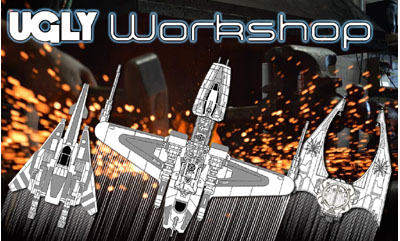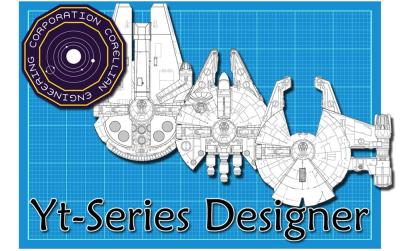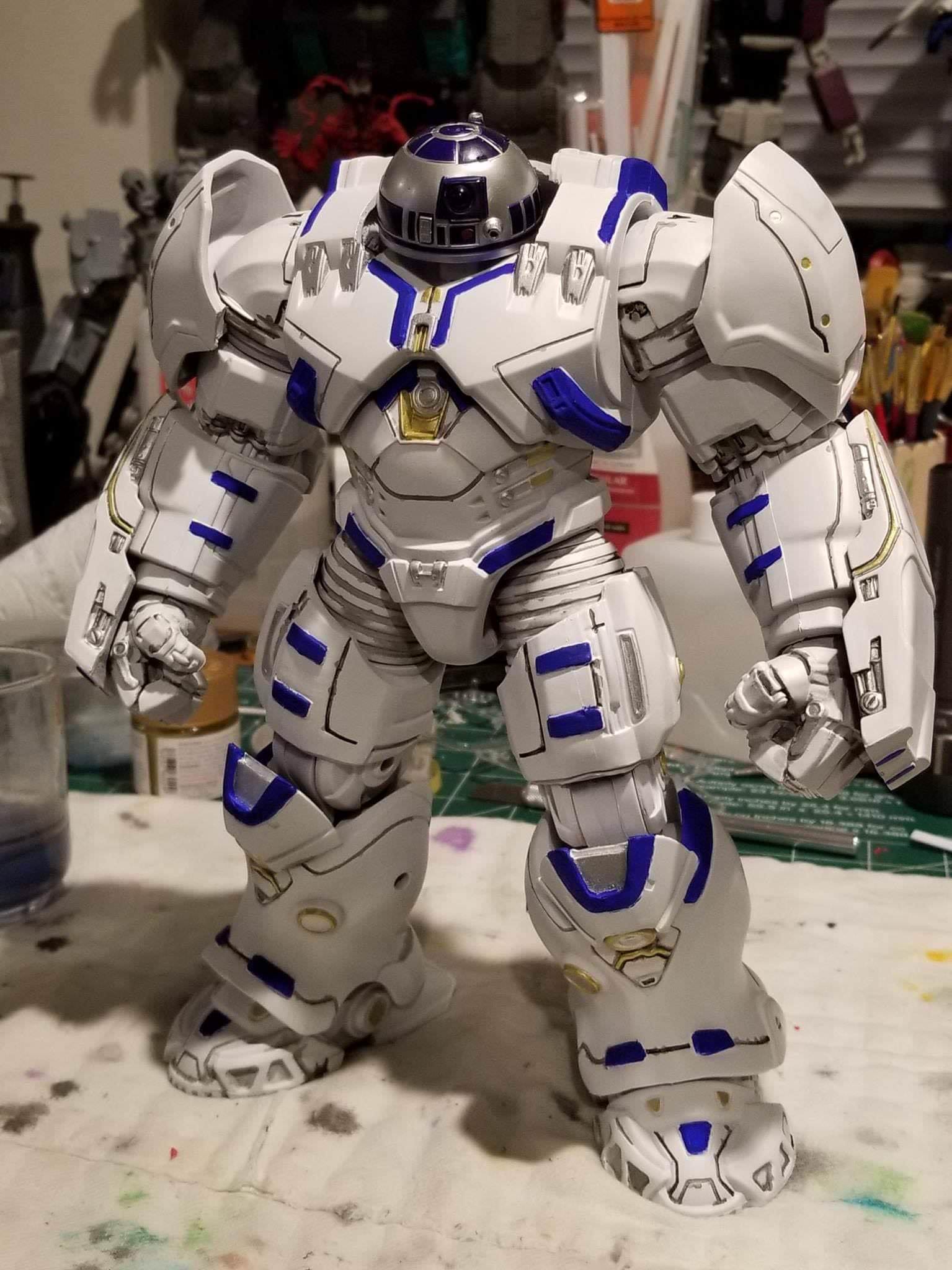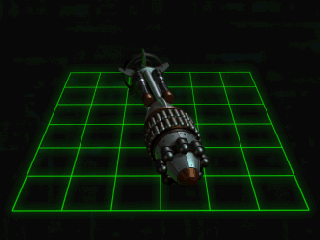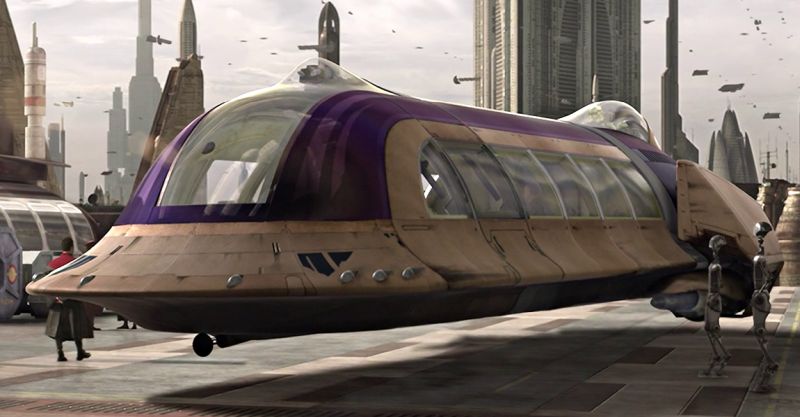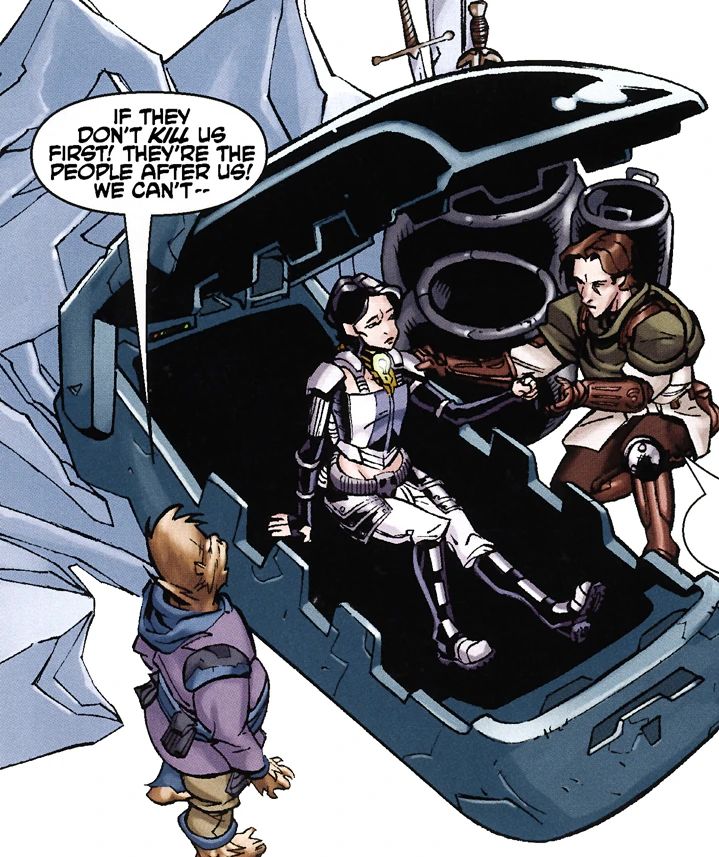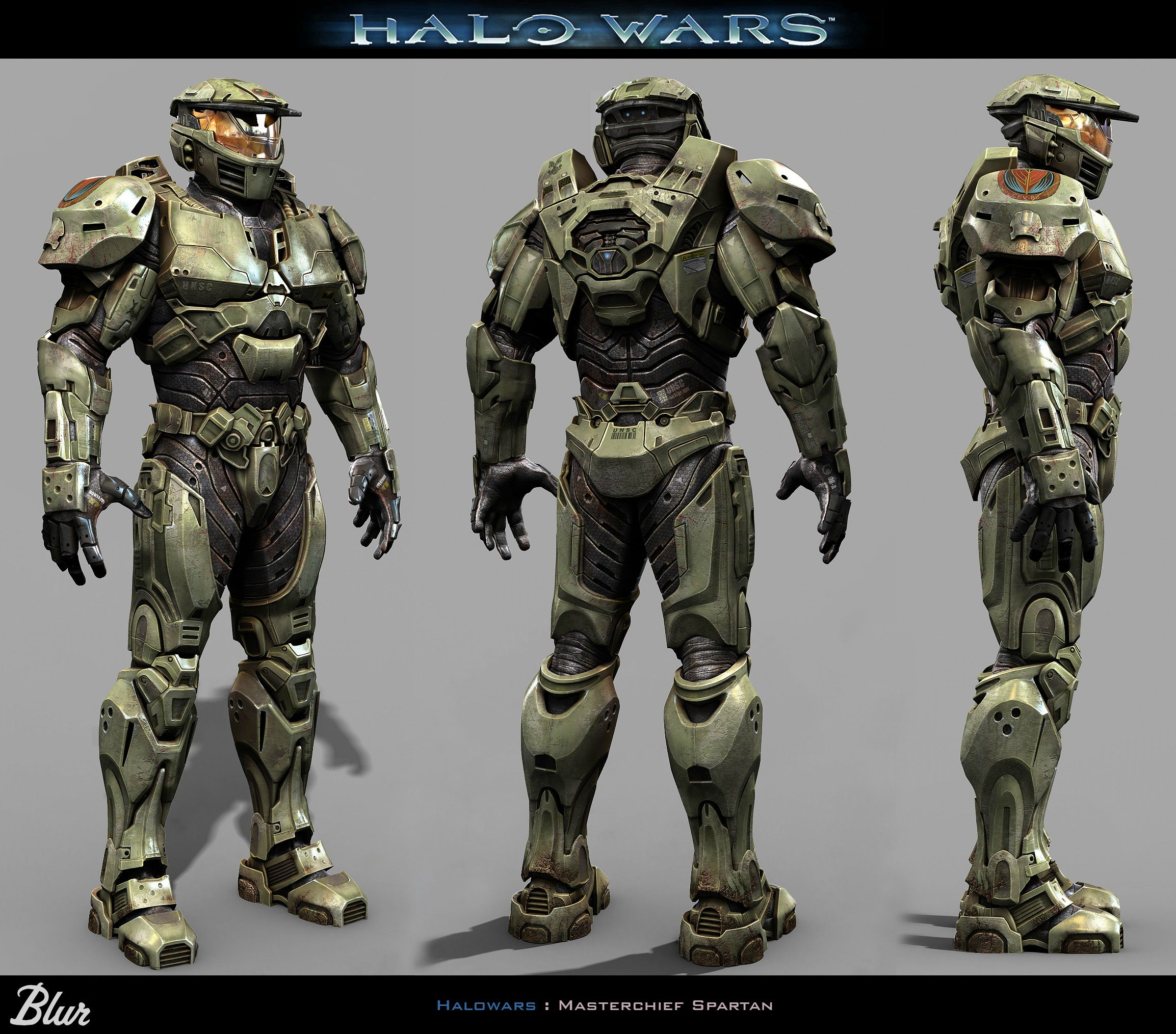 MJOLNIR ARMOR MK IV
"You're the only ones who can use them, Petty Officer. Who else could we give them to?"
ââ¬â Dr. Catherine Elizabeth Halsey
The Mark IV Mjolnir Powered Assault Armor were a series of Mjolnir Powered Assault Armors created, modified, and fielded in the second quarter of the 26th-century.
Model: UNSC Materials group Mjolnir Powered Assault Armor Mk IV
Type: Powered combat armor suit
Scale: Character
Skill: Powersuit Operations: Mjolnir Mk IV
Cost: Not Available For Sale
Availability: 4, X
Difficulty: Heroic Powersuit Operations (Moderate for Spartan-II)
GAME NOTES:
Summary:
-Heroic Powersuit Operations skill roll to use (Moderate for Spartan-II)
-Battle Suit: Strength +2D VS Physical/Energy (Outer Shell+Techsuit).
--Modular Outer Shell: +1D VS Physical/Energy.
--Techsuit: +1D VS Physical/Energy.
---Strength +2D for pushing/lifting skill rolls.
-Reactive Metal Liquid Crystal Layer:
--+1D to Dexterity skills and Strength Damage.
--x2 Weight Lifting Capacity.
--Move +8 meters.
--+2D Jumping Skill.
-Hydrostatic Gel Layer: +2D VS high velocity impacts, Difficulty -2 levels (-10).
-Pressure Seal/Sealed Environment: +2D VS Extreme Environments (heat/cold/underwater/space/radiation).
-Helmet:
--+1D Perception to perceive surrounding environment.
--Flashbang Protection: Perception +2D VS bright light and visual stun effects.
--External Audio Speakers (mute option for silent communication).
--Visual Light Dimming/Amplification.
--Thermal Imaging.
--Macrobinocular Function (visual zoom 1,000 meters).
--HUD:
---Identify Friend or Foe (IFF) locator (shows enemies/allies, tied to Heat/Motion Sensor).
---Health monitor.
---Armor Data.
---Data Sharing with other UNSC/allied assets.
---Map/Geographical Data.
----Can set Waypoints.
---Targeting Reticule (Weapons equipped with SmartLink).
---Ammo counter (Weapons equipped with SmartLink).
---Weapon/Equipment Selection (Items equipped with SmartLink).
---Heat/Motion Sensor: 20m range, horizontal plane only.
--Comlink: Audio/visual feed, imaging and video gear, data exchange, 100 km range.
---Access to TACCOM.
--Solar-powered lighting.
-Sealed Envioronment: 90min air supply, air filters, can EVA, 2 week x2 food/water supply.
-Low-Impulse Propulsion Jets: 8 meter Move in space.
-Magnetic Clamps: holds gear on legs/waist/back, attach to metal surfaces with hands/feet.
-Biofoam Injector Ports: Inject biofoam when injured, maintains Sealed-Enviornment.
--(Biofoam works like Star Wars D6 medpac or better).
-Difficult To Transport:
--Weight, 453.6kg/1,000lbs.
--30min-1hr to put on or remove, 5-10min with automated armatures.
--Automataed armatures reduces time to 5-10 minutes.
-Microfusion Reactor Power Source.
--Fail-Safe Detonation System: Moderate Powersuit Operations skill roll.
---Burns everything within a ten-meter radius.
----Blast Radius: 0-3/5/7/10
----Damage: 8D/7D/6D/5D Energy Damage.
----8D Radiation Poisoning/Damage.
---Then produces a large blast (30-50 meters).
----Blast Radius: 0-5/10/15/20/30/50.
----Damage: 15D/14D/13D/12D/10D/8D Energy Damage.
----GMs can feel free to make this bigger and stronger.
-Force-Multiplying Circuits: Heroic Powersuit Operations skill roll per round to use safely when moving, otherwise wearer must roll VS 5D Damage per round until they can either stop moving (Heroic Dexterity roll) or die. Spartan-IIs have this Difficulty reduced to Moderate. Located throughout the armor, these systems boost the force applied by the user. They make hand-to-hand combat easier, but also make the armor difficult to adjust to; a slight motion can be translated into a potentially harmful one if not conducted correctly. For this reason it is only possible for Spartans to use this armor, as their strengthened bodies are able to withstand the increased power and speed of movement, which, in un-augmented human bodies, results in broken bones or death due to spasms caused by the pain of broken bones.
-Titanium Alloy Outer Shell: Strength +1D VS Physical/Energy (combines with Techsuit bonus for Strength +2D VS Physical/Energy). The outer shell of the Mjolnir Armor is comprised of a fairly thick titanium alloy. This plating covers the chest, arms, hip, legs, calf's, feet and hands. This alloy is very resilient, can take significant punishment, and is nearly impervious to small arms fire. While enough shots from armor piercing rounds will breach the outer shell, the suit can take a few glancing blows from them without compromising the armor. The outer shell of the Mjolnir suit is covered with a refractive coating to help disperse the heat experienced from Covenant energy weapons. However one or two direct hits from any Plasma weapon will compromise the armor plating.
-Titanium Nanocomposite Bodysuit (Techsuit): Strength +1D VS Physical/Energy, Strength +2D for pushing/lifting skill rolls. Sandwiched between the external armor and the internal padding is a thick black armored bodysuit. This suit has numerous functions, small but vital to the safety and survival of the wearer. The bodysuit is made of a titanium-based material, making it very strong and yet very flexible. It also serves as another layer of protection against ballistic attacks and is coated with a heat resistant material to disperse heat from plasma weapons. Stat-wise, this works with the Titanium Alloy Outer Shell to combine armor bonuses to Strength to resist Damage, but the Techsuit is the basis for all Mjolnir armors, and the outer shell is added on top of this. Different models of outer shell grant different bonuses and some vaiants off difeatures or abilities all together
-Reactive Metal Liquid Crystal Layer (RMLC Layer): +1D to Dexterity and Strength, Move +8m, +2D Jumping skill. Dexterity bonus applies to hand-eye coordination and agility related skills like ranged and melee combat as well as Dodge and Parry skill rolls. Strength bonus improves damage for brawling, melee, or hand-to-hand combat in general. Liquid crystal forms the inner structure of the suit. This reactive metal increases the strength, reaction time, mobility, speed, and all around physical performance of the SPARTAN-II. This layer of crystal, knitted together at a molecular level and fitted in between the outer plates and the inner padding, accounts for over eighty percent of the Mjolnir Armors cost of construction and materials. It also doubles (x2) the Weight Lifting Capacity of the user (if using the list weight for the Lifting skill shown in Star Wars D6 rules, double the weight listed for using the skill).
-Helmet And HUD: The Mjolnir Helmet is one of the most vital aspects to the Mjolnir system. It is made of Titanium and contains key features like a Heads-up display (HUD) that links to the brain and hands, and can identify equipment and display information about it when it is picked up by the wearer. Another feature is the direct neural interface system which connects to a SPARTAN-IIs neural implants. Two core processor chips are implanted into the subjects skull in the rear of the head. This is essentially comparable to an on board computer using parts of the human brain for processing - when the connector at the rear of the subjects head and receptors in the brain link to the helmets on board sensors it creates the neural link needed to move the Mjolnir suit. The helmet also contains other equipment to protect and aid the user in hostile conditions. This includes: filters to remove toxins from the atmosphere, a supply to provide air to the wearer during EVA (90 minutes), thermal and motion sensors, communications, solar-powered lighting, and imaging and video gear.
+1D to Perception skills used for perceiving the surrounding environment, but does not improve interaction, stealth, or other such skills. The helmet has a Heads Up Display (HUD) that shows information to the wearer, such as ammo count for weapons equipped with a SmartLink, location of enemies/targets, allies, and various objects such as moving vehicles in the suit's radar motion tracker system, health monitor, various other armor-related technical data, audio speakers for the commlink as well as showing a video feed of the person being communicated with, availability of other equipment if attached to the armor, and the ability to close off external communication if the wearer wants to have a private communication with someone else via the commlink (Spartan IIs were known to have private conversations this way when non-Spartans were standing right near them, though Doctor Halsey their creator learned to know them so well that she could often discern what their conversations were about due to their body language and mannerisms, and could even identify each Spartan II this way as they all tended to look the same when wearing their armor). The helmet of the visor also helps protect against flashbang effects (Perception +2D to resist) and has light amplification and dimming effects to allow better sight in changing environments where normal human sight may be limited. It also has a zoom function to allow sight and target spotting and engagement at greater distances (normal rules for macrobinoculars in SWD6). The helmet can also feed the wearer various tactical data like displaying maps of a given area (if map data was ever made available via recon specialists, drones, satellites, or orbiting ships or other facilities), and set waypoints at map locations for various mission purposes. These waypoints and other data can be shared with other UNSC personal equipped with helmets that have HUDs or other equipment linked to the UNSC's BattleNet (Bee-Net), or other properly equipped personnel or facilities such as bases, ships, orbiting stations, etc.
GM discretion to allow the VISR function shown in Halo 3: O.D.S.T. and Halo Infinite. VISR could explain many of the functions listed in the helmet above, but it also had other uses, such as helping spot useful weapons and equipment nearby within visual range (+1D Search skill rolls for this purpose) and identifying UNSC assets as well as other non-UNSC assets marked by the wearer, mission support personnel in communication with the wearer, or an onboard A.I., as well as set waypoints for objectives. VISR was not shown in Mjolnir armor until Halo Infinite, and could even be a sort of plot device.
-Motion Tracker: The MJOLNIR Mark IV's HUD features a limited function motion tracker. 20 meter range, only on a horizontal plane, does not take vertical enemy positions into account.
-Pressure Seal/Sealed Environment: The armor and helmet has a sealed environment for protection against temperature extremes and a contained air supply of ninety minutes (1 1/2 hours). This allows the wearer to survive the vacuum of space for a time, as well as extreme heat/cold and underwater environments (+4D VS these if needed). The suit also has various thrusters on it that enable it to perform a proper spacewalk and control their movements in space so they do not drift aimlessly and are lost to deep space. However, these are functional, but not as good as they could be, and Spartans that are knocked away from safety hard and fast enough may still be lost to deep space, especially if a firefight is going on. A Mjolnir variant called EVA is better suited for spacewalks and is more capable of preventing this from happening. The helmet has air filtration systems for taking in fresh air when available, as well as filtering out poisonous substances from the atmosphere. The Pressure Seal is a vital component to the Mjolnir system, it keeps the system airtight, underwater or in space. The seal is very strong but will only break under extreme pressure, such as in a high velocity impact or when the Hydrostatic Gel has been over pressurized.
The suit can also carry supplies of condensed food and water (2 week supply)in it for the wearer to stay operational in the field for extended periods of time. Spartan-IIs may not need to eat/drink as often as normal humans and can stretch these supplies out longer (x2).
-Low-Impulse Propulsion Jets: 8m Move in space. Located at the back of the suit beneath the fusion reactor, this component provides the ability to propel the MJOLNIR user over short distances and maneuver in zero-gravity environment.
-Hydrostatic Gel Layer: Underneath the armored bodysuit is a gel-filled layer, this gel layer regulates the temperature of the suit and can change its density to conform to the wearer's shape - the temperature inside the suit is controlled by the moisture absorbing cloth suit underneath the hydrostatic layer. The hydrostatic gel layer can also be pressurized to various levels to potentially save the wearers life should the wearer be subjected to high G forces or a high velocity impact; however, over pressurizing this layer can cause nitrogen embolisms. This grants +2D in such situations, as well as reducing the Difficulty Level of such instances by two levels (surviving a fall off a mountain that requires a Strength+armor+Impact Gel roll of Heroic Difficulty instead only requires a roll of Difficult). Combining this feature with the energy shields that would be introduced in later Mjolnir armor variants is how Spartans can survive being dropped from low orbit and impacting on the surface of a planet (though the Difficulty for this also depends on if they are hitting soft dirt or rock, concrete or other "hard" structures).
-Magnetic Weapon Holder Strips: Available on the Mk IV, Mk V, and Mk VI, the magnetic strips are very small yet powerful magnets placed on the legs, waist, and back of the suit and is used to hold any equipment with a magnetic property. The suit also contains a magnet system on the boots of the Mjolnir suit that allow its wearer to stay attached to a metal surface in Zero G environments and can be toggled on or off by the wearer. These clamps are also present on the hands and feet and allow the wearer to walk or crawl on a metal surface in the vacuum of space, such as the outer hull of UNSC and Covenant starships. The clamps may only be part of the Outer Shell and the Techsuit may not have them built in.
-Biofoam Injector Port: The biofoam injectors on the Mark IV are ports where a direct supply of biofoam or other medicines, must be administered from a standard military first aid kit when the wearer is injured, as the suit does not hold or generate its own supply inside the suit.
-Difficult To Transport: Suits of Mjolnir armor are not something you can simply take off, fold up, and put away in a suitcase or closet. They require a complex framework of armatures and equipment to properly put on and to remove again. For this reason, the suit is built to be as comfortable as possible for a Spartan-II so it can be worn for days, weeks, months, or longer, at a time. The suit is also capable of being worn by Spartans when using UNSC cryo chambers for long distance slipspace FTL journeys. Weight, 453.6kg, requires 30 minutes to 1 hour to put on, automated armatures reduce to 5-10 minutes.
-Microfusion Reactor: The fusion reactor is the most essential part of the Mjolnir System, as it provides power to all equipment on the Mjolnir Armor, the reactor is built into the suit and allows for nearly unlimited movement. The fusion reactor in all versions of the Mjolnir Armor are half the size of a normal fusion pack that conventional marines carry around. Later versions with energy shields require an external device to power up and activate the shields though. Some fan-made depictions of Mjolnir armor also show this power supply being used as an improvised miniature nuclear bomb (Metroid+Halo: Haloid).
-Fail-Safe Detonation System: This system functions as a self-destruct mechanism in order to prevent a dead Spartan's armor from being compromised by hostiles. It is activated by a series of digits that only the Spartans know. When engaged, it produces a reactor overload that burns everything within a ten-meter radius (8D Energy Damage, 8D Radiation Poisoning/Damage), then produces a large blast (30 meter radius [0-5/10/15/20/30], 15D Energy Damage [15D/14D/13D/12D/10D]).
-Power Lamp: Light source for seeing in dark environments, 30 meter range.
-Comlink: The suit's helmet has a powerful communication device able to communicate within a range of 50 kilometers, however this can be greatly extended if able to link up to the UNSC BattleNet via drones, comm towers/stations, orbital ships, stations, satellites, and other such facilities and assets for potentially global and orbital communications. Also has access to TACCOM, short for Tactical Communication. Frequencies reserved for sharing of information between small units on the battlefield. While audio communication is not possible on TACCOM, one team member can upload images, NAV points, and sensor information into the HUD of other members of their team. Similar to SQUADCOM.
-Smart-Link: Smart-linking is the process of linking an optical scope to the user's HUD. The technology is used in most UNSC infantry firearms. The smart scope allows players to activate a holographic zoom-in overlay with an enhanced targeting reticle while using any ranged weapon. Apart from easing the player's aiming, the weapon's accuracy is not affected by the smart scope (though variants that grant such bonuses may be available). Instead of using a modern cumbersome scope on a weapon, a much smaller camera can be attached to the weapon that functions as a scope, and what it can see and zoom in on can be seen by the helmet's HUD, as well as standard HUDs for UNSC soldier helmets.
DESCRIPTION
Operational History
The first suit to fall into the "Mark IV" designation was issued to SPARTAN-II commandos on November 27th, 2525. The armor would be field tested immediately as the armor was acquired in the middle of the Battle of Chi Ceti.
By January 7, 2535, MJOLNIR armors began to use official designations. Meaning all armors previous to that point were given designations. Various modified chassis and pieces of hardware already used were thus labelled as Mark IV. Much of this mass labeling by the UNSC was due to budgetary reasons.
It was in service until November 24th, 2551, when the Mark IV began being replaced by the Mark V. John-117 was known to use the Mark IV until an unspecified later date due to him being in the field when the Mark V originally entered service.
After the creation of the SPARTAN-IV program, a damaged Mark IV helmet was acquired by the program. It would become the last thing that candidates would see before undergoing their augmentation procedures.
The members of Red Team aboard the UNSC Spirit of Fire still donned their Mark IVs by the year 2559. However, the helmet of Douglas-042 was crushed by Atriox.
Design
Created alongside the SPARTAN-II Program, the Mjolnir Mark IV Armor was a radical redesign to previous powered exoskeletons, streamlining their design into a practical purpose for use in the field. The brainchild of Dr. Catherine Halsey, the Mark IV represented her vision of creating a powered exoskeleton capable of taking full advantage of the physical capabilities of a SPARTAN-II. The Mjolnir battlesuit is constructed in overlapping layers. It is a sealed system, capable of extravehicular activity or operations in toxic atmosphere and vacuum. It is hardened against EMP and radiation, and has filters that are completely effective at removing toxins and bacteria from local atmosphere.
The armor's shell is composed of a multilayer alloy of remarkable strength which has been augmented with a refractive coating capable of dispersing a limited amount of Covenant energy weapon strikes. The suit contains a gel-filled layer underneath a thick black armored bodysuit. The gel layer regulates temperature and can reactively change its density in a few seconds. The inner skinsuit is made of a moisture-absorbing synthetic material linked to an environmental control computer and the occupant's SPARTAN-issue Command Neural Interface. An upgrade to the standard Neural Interface is issued to all high-ranking officers; another modified version of the neural lace is issued to all SPARTAN-IIs in the UNSC as well. This network translates electrochemical signals to digital code and routes them through an interface connection at the rear of the skull. Through this interface, the user's thoughts command the armor's movement and weapons and input from the onboard sensors comes directly to the user's mind. The synthesis of machine and mind is so fast that it is almost impossible to chart the reaction time. Unfortunately, the system is so reactive that normal human beings cannot use the suit without injuring or even killing themselves. Only humans who have undergone carbide ceramic ossification, a bone-strengthening treatment from the SPARTAN-II augmentation program, have been shown to safely operate the suit.
Sandwiched between the external armor and the internal padding is the most devastating weapon the suit carries: a layer of reactive metal liquid crystal. Woven by molecular tools into a superdense layer, this layer is amorphous, yet it amplifies force, doubling lifting capability and increasing reaction time by a factor of five. Such technology did not exist when work began on the Mark I prototypes.
Because of these advancements, the design is more akin to an actual suit of armor, as opposed to a powered exoskeleton; the user moves the suit, and in return the suit moves the user. This allows for an incredibly compact design when compared to other combat systems. The armor contains numerous features including an integrated computer system which continuously monitors weapons, biological functions, and a "smart" motion-sensing radar. The suit also contains a built-in oxygen re-breather system that can provide air for up to ninety minutes. The suit's helmet also features imaging and video recording, and thermal sensors among other features.
In its final phase the Mjolnir battle suit weighed nearly half of a metric ton,[13] or 1000 lbs, and when used, was a fully neural-linked system and was the most advanced piece of tactical military hardware in human hands at the time of its inception.
With proper firmware updates, the Mark IV suit can be used with MJOLNIR Generation 2 techsuits and VISRs.
Armor Components
Helmet: The Mjolnir Helmet is one of the most vital aspects to the Mjolnir system. It is made of Titanium and contains key features like a Heads-up display that links to the brain and hands, and can identify equipment and display information about it when it is picked up by the wearer. Another feature is the direct neural interface system which connects to a SPARTAN-IIs neural implants. Two core processor chips are implanted into the subjects skull in the rear of the head. This is essentially comparable to an on board computer using parts of the human brain for processing - when the connector at the rear of the subjects head and receptors in the brain link to the helmets on board sensors it creates the neural link needed to move the Mjolnir suit. The helmet also contains other equipment to protect and aid the user in hostile conditions. This includes: filters to remove toxins from the atmosphere, a supply to provide air to the wearer during EVA, thermal and motion sensors, communications, solar-powered lighting, and imaging and video gear.
Titanium Alloy Outer Shell: The outer shell of the Mjolnir Armor is comprised of a fairly thick titanium alloy. This plating covers the chest, arms, hip, legs, calf's, feet and hands. This alloy is very resilient, can take significant punishment, and is nearly impervious to small arms fire. While enough shots from armor piercing rounds will breach the outer shell, the suit can take a few glancing blows from them without compromising the armor. The outer shell of the Mjolnir suit is covered with a refractive coating to help disperse the heat experienced from Covenant energy weapons. However one or two direct hits from any Plasma weapon will compromise the armor plating.
Titanium Nanocomposite Bodysuit: Sandwiched between the external armor and the internal padding is a thick black armored bodysuit. This suit has numerous functions, small but vital to the safety and survival of the wearer. The bodysuit is made of a titanium-based material, making it very strong and yet very flexible. It also serves as another layer of protection against ballistics attacks and is coated with a heat resistant material to disperse heat from plasma weapons.
Hydrostatic Gel: Underneath the armored bodysuit is a gel-filled layer, this gel layer regulates the temperature of the suit and can change its density to conform to the wearer's shape - the temperature inside the suit is controlled by the moisture absorbing cloth suit underneath the hydrostatic layer. The hydrostatic gel layer can also be pressurized to various levels to potentially save the wearers life should the wearer be subjected to high G forces or a high velocity impact; however, over pressurizing this layer can cause nitrogen embolisms.
Reactive Metal Liquid Crystal Layer: Liquid crystal forms the inner structure of the suit. This reactive metal increases the strength, reaction time, mobility, speed, and all around physical performance of the SPARTAN-II. This layer of crystal, knitted together at a molecular level and fitted in between the outer plates and the inner padding, accounts for over eighty percent of the Mjolnir Armors cost of construction and materials.
Magnetic Weapon Holder Strips:Available on the Mk. IV, Mk. V, and Mk. VI, the magnetic strips are very small yet powerful magnets placed on the legs, waist, and back of the suit and is used to hold any equipment with a magnetic property. The suit also contains a magnet system on the boots of the Mjolnir suit that allow its wearer to stay attached to a metal surface in Zero G environments and can be toggled on or off by the wearer.
Pressure Seal: The Pressure Seal is a vital component to the Mjolnir system, it keeps the system airtight, underwater or in space. The seal is very strong but will only break under extreme pressure, such as in a high velocity impact or when the Hydrostatic Gel has been over pressurized.
Biofoam Injector Port: The biofoam injectors on the Mark IV is a port where a direct supply of biofoam or other medicines, must be administered from a standard military first aid kit when the wearer is injured, as the suit does not hold or generate its own supply inside the suit.
Fusion Reactor: The fusion reactor is the most essential part of the Mjolnir System, as it provides power to all equipment on the Mjolnir Armor, the reactor is built into the suit and allows for nearly unlimited movement. The fusion reactor in all versions of the Mjolnir Armor are half the size of a normal fusion pack that conventional marines carry around.
Variants
Throughout the Human-Covenant War, the Mark IV became a testing bed for new technologies and hardware to help improve the integrity of both the system and the efficiency of it in certain combat conditions. While some of these variants of the Mark IV MJOLNIR Armor are rumors and have never been witnessed in the field, some have become common knowledge.
Unless stated otherwise, Mjolnir Mk IV variant components are useable by Mk V suits.
Known Variants
Mark IV/EVA Variant
The Mjolnir Mark IV Extra Vehicular Activity (EVA) variant was developed to focus on increasing exo-atmospheric endurance and improving mobility in zero gravity. The movement could be controlled with the use of a T-PACK, or Thruster Pack, attached to the armor. This was not without dangers however; in case the T-PACK would malfunction, the wearer would be propelled into deep space where a rescue would be nearly impossible. The V variant of the Mjolnir Armor contains a reverse-angle camera on the helmet to allow for better view of anything behind the wearer. The helmet also contains a single-beam laser TEAMCOM system for communications. The only limitation of this variant is the mobility of the wearer is a fraction of normal movement. Technologies developed for the Mark IV EVA variant were later applied for the V Variant of the Mark VI armor. However, this version was able to maneuver in vacuum without the original use of thruster packs.
Changes To Mjolnir Mk IV Base Suit:
-Air Supply: 180 minutes/3 hours.
-T-PACK: 14 meter Move (in space), Powersuit Operation skill to use.
--Damage may cause uncontrolled movement in random direction, Heroic Difficulty to counter.
-Rear-View Camera.
-TEAMCOM site-to-site laser comlink.
-Move: +4 meters.
Mark IV/Grenadier Variant
The Mark IV [G] variant is an up-armored prototype based on the standard Mark IV helmet. It served as the basis for all subsequent armor variant development programs, and is also compatible with later models such as the Mark V. Additionally, the variant served as the test bed for incorporating energy shielding technology with the Mjolnir. (Also, this is the variant used by Jorge of Noble Team in Halo: Reach).
Changes To Mjolnir Mk IV Base Suit:
-Up-Armored Outer Shell (+2): +1D+2 VS Physical/Energy (+2D+2 with techsuit).
-Energy Shields (Experimental): +3D*
*NOTE! (Energy Shields Optional Rule): Each +1D of shields is an "extra wound" that needs to be depleted from the target, hence the term "stripping shields". When the attacker rolls damage against a shielded target, they roll their dice and compare the result to the Star Wars D6 Damage Chart like normal. But the Damage Chart result is reduced by one level per +1D of shields at the expense of that 1D (The Damage is effectively negated -5 per +1D of shields). The character must then rely on their Strength and armor dice to resist damage while the shields will need time to recharge, if they can. Unless otherwise stated, the shields are depleted according to what Damage was negated and take two rounds before they begin recharging, then one round per 1D of shields to recharge to full. So +3D of shields would take a total of five rounds to recharge.
Mark IV/Security Variant
An early iteration of the Security helmet was operational for the Mark IV in 2528. It would later be adapted for use with the Mark V armor.
Changes To Mjolnir Mk IV Base Suit:
-Outer Shell (+1): +1D+1 VS Physical/Energy (+2D+1 with Techsuit).
-HUD: Motion Tracker range +10 meters (30 meters).
Mark IV/CQC Variant
Introduced in 2548, the Close Quarter Combat (CQC) variant was designed for boarding action and Military Operations in Urban Terrain (MOUT). It would later be adapted for use with the Mark V armor.
Changes To Mjolnir Mk IV Base Suit:
-Outer Shell (+1): +1D+1 VS Physical/Enervy (+2D+1 with techsuit).
--Reinforcement: +2 VS Physical Damage (Ballistic).
-Helmet: +1 Difficulty Level (+5) VS Called Shots.
--Reinforcement: +2D VS Damage from Called Shots (to head).
Mark IV/EOD Variant
Manufactured by the Materials Group in 2531, the EOD variant is designed for explosive device handling. It would later be adapted for use with the Mark V armor.
Changes To Mjolnir Mk IV Base Suit:
-Outer Shell (+1D): +2D VS Physical/Energy (+3D with Techsuit).
-Techsuit: +1D VS Physical/Energy Damage (Explosive)(+4D with Outer Shell+Techsuit).
-Reactive Metal Liquid Crystal Layer: Does not grant Dexterity/Move/Jumping bonus due to weight (-1D Dex, -8m Move, -2D Jumping).
Mark IV/Advanced Hardware Prototype
The Mjolnir advanced hardware prototype refers to a series of hardware and technologies developed for testing and incorporation into later versions of the Mjolnir Armor. The advanced prototype is a single variant, that changes in appearance for research and development of future Mjolnir components.
Ideas For Tested Prototypes And Components (Fan-Made, Unofficial):
-Mark IV/AHP-ABP (Anti-Ballistic Prototype) "Hard Suit":
--Outer Shell +1D VS Physical/-1D VS Energy (+3D VS Physical/+1D VS Energy with Techsuit).
-Mark IV/AHP-AEP (Anti-Energy Prototype) "Hot Suit":
--Outer Shell -1D VS Physical/+1D VS Energy (+1D VS Physical/+3D VS Energy with techsuit).
-Mark IV/AHP-HMP (High-Mobility Protype) "Hopper":
--Outer Shell: +1 VS Physical/Energy (+1D+1 with techsuit).
--Reactive Metal Liquid Crystal Layer:
---+2D to Dexterity skills, +1D Strength Damage.
---Move +14 meters.
---+3D Jumping Skill.
-Mark IV/AHP-ARS (Advanced Recon Scout) "Charger":
--Outer Shell (Legs): +2D VS Physical Damage (Falling/Hard Landing).
---HUD: Motion Tracker range +20 meters (40 meters).
--Rocket Pack: Jumping +2D (+4D Total), 50 meter jump (1 charge), 100 meter jump (2 charges), 20 charges.
-Mark IV/AHP-OES (Overcharged Energy Shield) "Death Wish":
--Reactive Metal Liquid Crystal Layer: Does not grant Dexterity/Move/Jumping bonus due to weight (-1D Dex, -8m Move, -2D Jumping).
--Experimental Overcharged Energy Shield: +6D. Works as Energy Shield rules stated below, except every time they receive Damage, roll 1D. If a 1 is rolled, this overloads the Microfusion Reactor and triggers the Fail-Safe Detonation System with the wearer inside.
-Mark IV/AHP-HCC (Heavy Close Combat) "Brawler":
--Outer Shell: +1D+1 VS Physical/Energy (+2D+1 with Techsuit).
--Reactive Metal Liquid Crystal Layer:
---+2D to Dexterity skills, +2D Strength Damage.
--Optional Advanced Melee Weapons:
---Arm Mounted Extreme Close Overpowered Range Shotgun (AM-ECOP):
----Range: 0-1/2/3.
----Damage: 7D/6D/5D.
----Ammo: 20
---Spartan Sword (1-handed): Strength +2D.
---Spartan greatsword (2-handed): Strength +3D.
|






